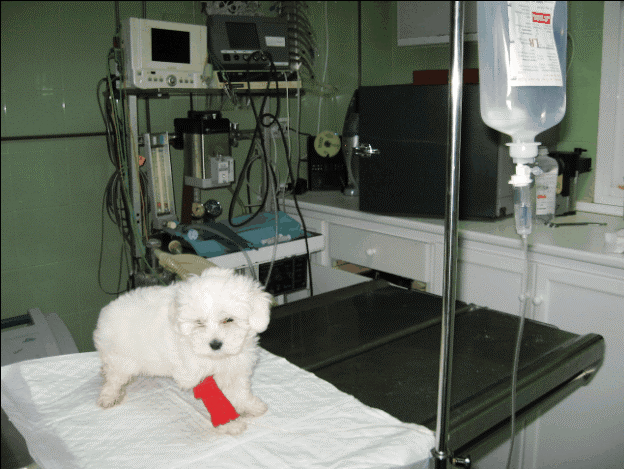Vomit
We usually take a puppy into the veterinary for this reason. However, there are times in which they can't be taken to the clinic so we resort to "ways we know" to cure this ailment. As you can probably figure out on your own, this isn't always the best way to go about it. We need to notice a series of events to get a better idea of how serious the problem really is:
1.We need to take a closer look at the vomit because it usually points to the cause: bits of food which is inappropriate for the puppy, cotton,.... In these cases, we need to notice if after vomiting it becomes calm or if it is still restless. Even if it is calm, we need to follow the protocol we will explain in the next lesson.
The colour of the vomit is important; if it has traces of blood in it (a more serious problem), if it is yellowish, with mucus/snot, undigested dog food,...
2.We need to take a look at the things it usually plays with, and your children's toys (if any). Our puppy may have swallowed something by accident and is in its stomach. If such is the case, whatever is inside needs to be extracted as soon as possible. I have seen dogs which have eaten a pacifier, socks, christmas decorations, the eyes of a doll, stones, .... They never seize to amaze me!
3.WE need to jot down the last food they ate and the time of vomit. This will be a great help in case of a later diagnosis if you need to take it to the vet's clinic.
4.Take its temperature. If it's above 39ºC, you need to take it to the clinic. It might be the start of a parvovirus and it is imperative to be fought as early as possible. As a matter of fact, any infectious disease needs to be treated in its early stage before it provokes a septicaemia or blood poisoning (which infects every organ leading to the death of our puppy).
Its temperature can also be below normal. This would indicate its organism is lacking the energy necessary to produce body heat. In this case, we need to take it to the clinic for anything its organism is lacking to be administered.
5. If we have a garden, we need to remember if there is anything there (like a fertilizer) it might have ingested.

This puppy came to the clinic because of vomiting. Its temperature was below normal.

